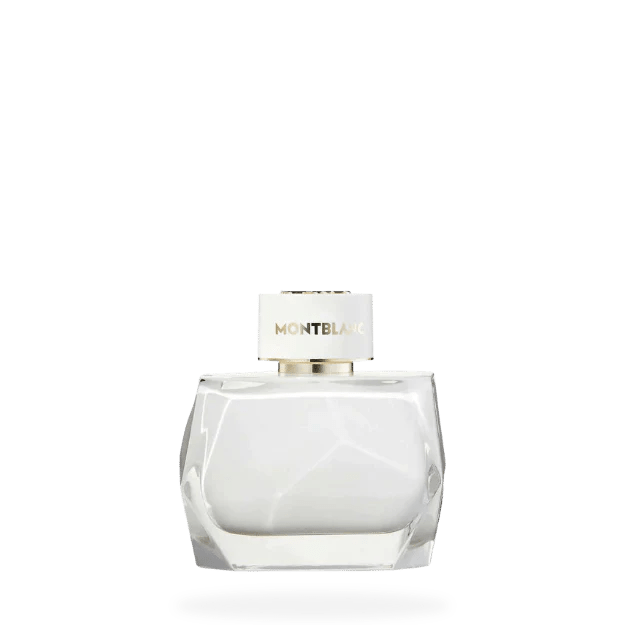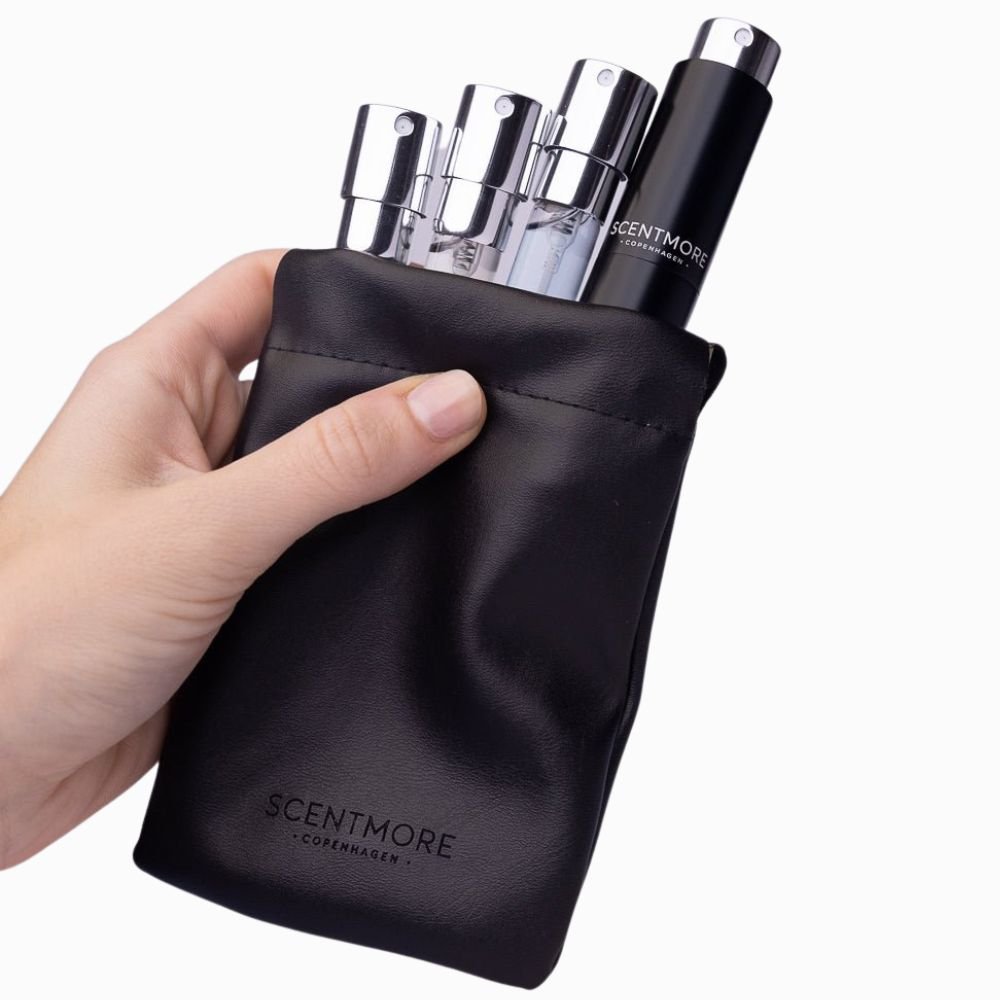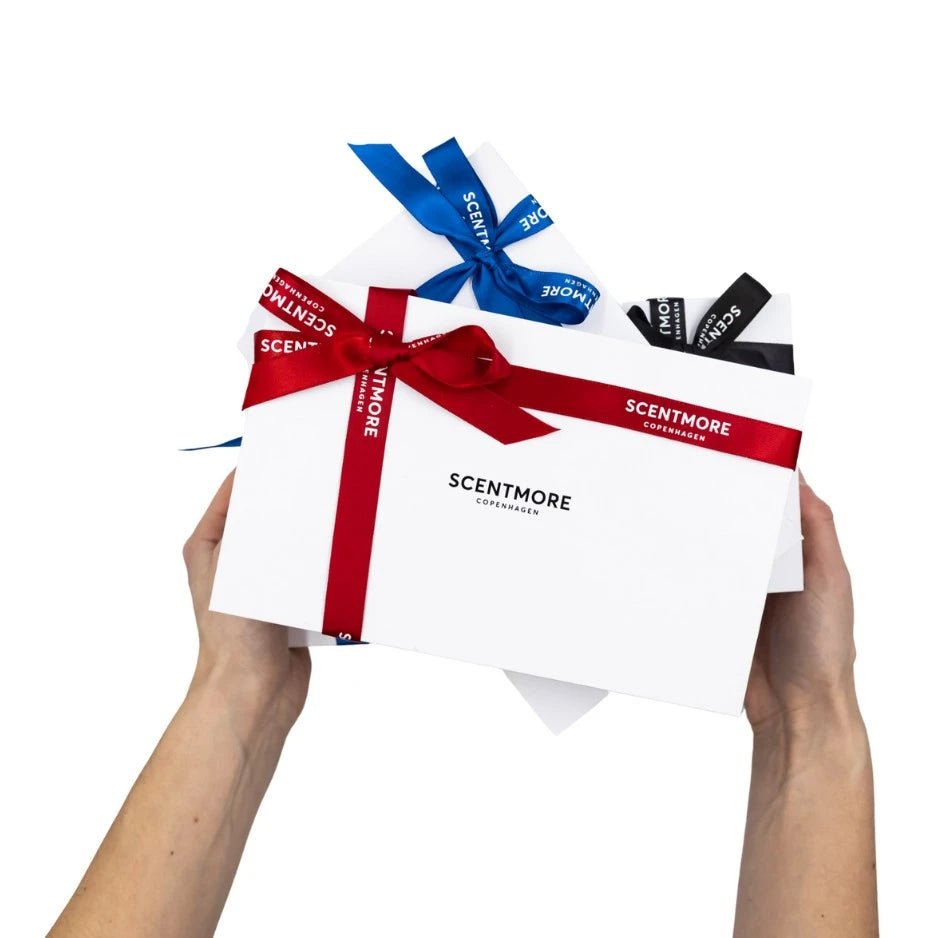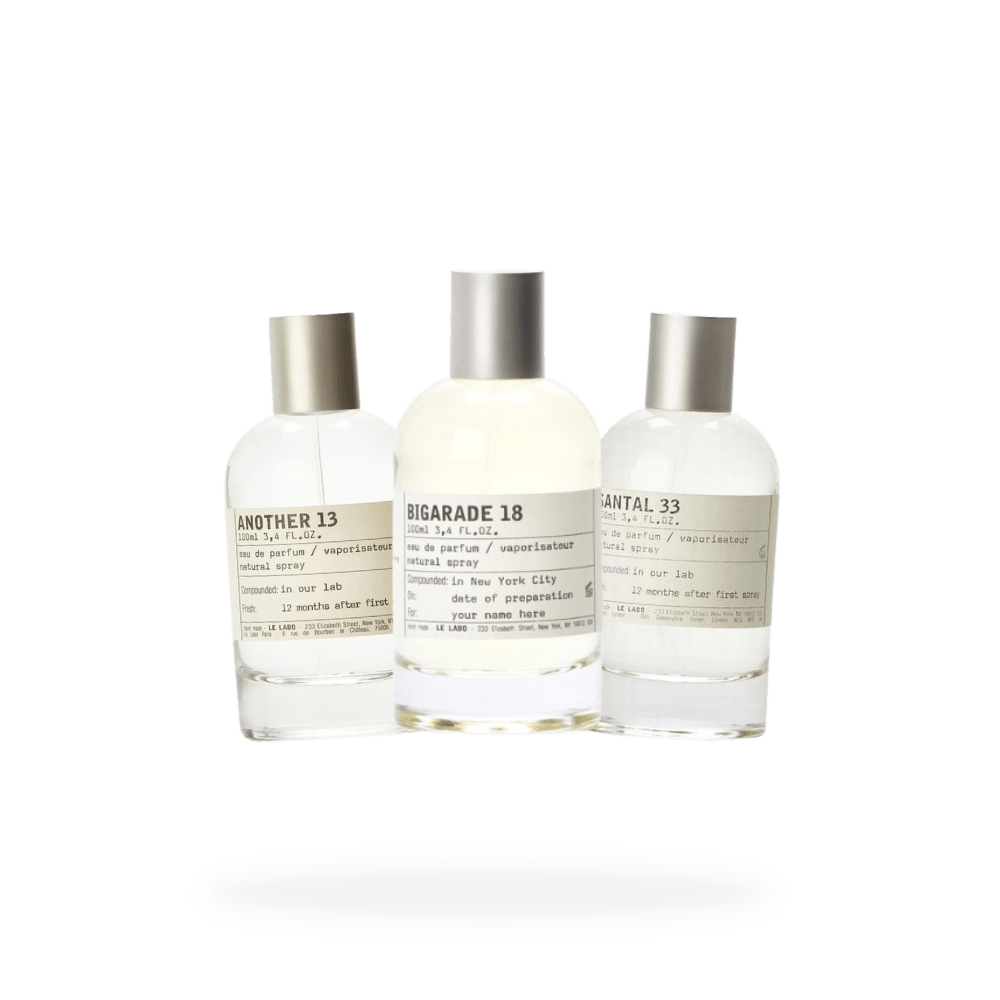
Explorer Platinum
Scentmore tilbyder nu et stort udvalg af eksklusive designer & nichedufte. Da disse kan koste op mod 4000 kr. i full-size har de et forholdsmæssigt premiumtillæg på typisk 20-70 kr. når de vælges.
Ønsker du ikke premium?
Udforsk +200 lækre designerdufte, som du har adgang til med dit medlemskab uden tillæg her.

30 dages forbrug af en ny duft hver måned
Skift, spring over eller opsig når som helst

dette er en test
Dekanteringen af den originale parfume foretages selvstændigt af Scentmore i København, der ikke på nogen måde er associeret med Montblanc eller dennes producent. Læs mere under fanerne 100% originale parfumer og Ansvarsfraskrivelse og i vores handelsbetingelser.
Duften leveres i vores 8 ml flaske sammen med et duftkort, der giver dig en dybdegående beskrivelse af duften, dens nøje udvalgte ingredienser og noter, samt de unikke karakteristika, der gør din valgte parfume helt særlig. Vores flaske er udstyret med en sprøjte af høj kvalitet, som giver en fin og jævn spredning af duften. Dens praktiske størrelse på 8 ml gør den perfekt til at have med overalt – selv på fly. Vores 8 ml flaske rummer op til 120 sprøjt, svarende til 4 sprøjt om dagen i 30 dage.
Flasken er designet til at blive genanvendt sammen med vores smarte case i mange smukke farver, så du kan tage din duftoplevelse med dig, hvor end du befinder dig. På den måde kan du let fremhæve den luksuriøse oplevelse, du får med hver af de nøje udvalgte dufte, vi tilbyder.
Vores flaske er fremstillet af en glastype kaldt borosilikatglas. Borosilikatglas er kendt for sin høje kvalitet og er den mest anvendte glastype i medicinsk udstyr og laboratorier på grund af dets særlige evne til at modstå kemi og temperatursvingninger. Vores sprøjte er udstyret med en højkvalitets sprøjtedyse i Polypropylen med en overflade af aluminium. Til pumpen benytter vi også Polypropylen (PP) som har en høj grad af kemisk stabilitet, som beskytter parfumen mod materialeafgivelse. Polypropylen er en særlig plasttype uden risiko for kemisk reaktion modsat andre plasttyper. På den måde sikrer vi duftens integritet og sørger for, at den forbliver uforandret. Polypropylen er modstandsdygtigt over for både syrer, baser, alkohol og olier, hvilket gør materialet velegnet til at sikre opbevaring af forskellig medicin og kemikalier uden risiko for reaktioner.
Polypropylen er ligesom Borosilikatglas inert, hvilket betyder, at det ikke reagerer med indholdet i parfumen, som er essentielt for at sikre sikker opbevaring og undgå forurening af parfumen over tid.
Med deres høje kemisk resistens, inert adfærd, og høje modstandsdygtighed over for termisk stød er både borosilikatglas og Polypropylen blandt de mest anvendte materialer til sikker opbevaring, håndtering af medicin, i laboratorier og i den farmaceutiske industri.
 Clary Sage
Clary Sage
 Cedarwood
Cedarwood
 Violet Leaves
Violet Leaves
Beskrivelse
Explorer Platinum er en duft, der hylder eventyr og udforskning af bjergene med en kraftfuld og tekstureret træagtig aroma. Denne duft indfanger den energiske friskhed fra violblad, som giver en let og grøn karakter. Hjertenoterne afslører en aromatisk essens af salvie, der tilfører en maskulin og urtet dybde. Basen af duften er varm og indbydende, domineret af cedertræ, der giver en solid og jordnær afslutning.
Explorer Platinum er en duft for den moderne opdagelsesrejsende, som søger en raffineret, men alligevel kraftfuld signaturduft, der afspejler styrke og eventyrlyst.
Populære lige nu:
*Gælder ikke abonnementskøb. Se alle dufte på
tilbud.
Fri levering
Vi tilbyder fri levering for alle medlemmer. 39 kr. for ikke-medlemmer.
Medlemskab
Første duft forventes leveret 2-4 dage efter bestilling.
Månedlige forventes leveres den 10-15. i måneden.
Uden medlemskab
Levering 2-4 dage.
100% originale parfumer
Scentmore foretager kun indkøb af parfumer fra autoriserede forhandlere og distributører og indestår derfor 100% for ægtheden af alle parfumer.
Scentmore forestår selvstændigt (og uden godkendelse fra brandindehaverne) dekantering af de originale parfumer til vores 8 ml. rejsestørrelser beregnet til at blive anvendt med vores smarte etui.
Dekanteringen sker under kontrollerede forhold af Scentmore i København og er således på ingen måde associeret med Montblanc eller dennes producent.
service@scentmore.dk
Vi bestræber os på at svare inden for 3 hverdage
Hvis det haster har du også mulighed for at chatte med os.
Ansvarsfraskrivelse
Scentmore er på ingen måde associeret med designeren eller designerens parfumeproducent.
Scentmore opererer selvstændigt og foretager kun dekantering af originale designer- og nicheparfumer til rejsevenlige størrelser under kontrollerede og sterile forhold i København.
Dekanteringen sker uden godkendelse af brandindehaveren, og der er således intet samarbejde mellem Montblanc og Scentmore.
Allerede medlem? Log ind for at vælge Explorer Platinum som månedens duft.
Kun 129 kr/md
Sådan virker det
Gør som +10.000 andre
Opdag en ny duft
hver. eneste. måned
Mere end 800 luksuriøse dufte venter på dig
Ny parfume hver måned helt til døren for kun 129 kr - inkl. levering
100% ORIGINALE PARFUMER
HURTIG, GRATIS LEVERING
FLEKSIBELT MEDLEMSKAB
INGEN BINDING, OPSIG NÅR SOM HELST
 Clary Sage
Clary Sage
 Cedarwood
Cedarwood
 Violet Leaves
Violet Leaves
The scent of clary sage evokes an interesting duality that is both animalic and herbaceous. Floral facets caress aromatic scents while rich undertones of camphor permeate. A warm, amber-like note reminiscent of fresh tobacco lingers.
UDFORSK DUFTE MED CLARY SAGECedar or cedarwood is a staple to the perfume industry—structuring and anchoring a wide variety of fragrances across almost all olfactory families. Its blendability is incomparable: cedarwood can be paired with other woody notes such as patchouli, vetiver or sandalwood, but it blends most seamlessly with floral and citrus fruits (and is particularly dashing alongside sparkling grapefruit). A naturally aromatic note, cedarwood, in and of itself, is distinctly warm, dry and woody with a slight leathery nuance. It is one of the oldest ingredients used in the perfumery, with its balsamic, woody aroma providing a key facet in many popular scents. Native to the Mediterranean and the Himalayas, cedarwood has been revered for its mystical and magical properties by many cultures throughout history. The Cherokee tribe believed that the human spirit was hidden in the core of cedarwood, while Tibetans used cedarwood oil in their spiritual ceremonies, and ancient Romans used the tree trunks for ship construction. In perfumery, cedarwood is primarily used as a base note, anchoring the top and middle notes of a composition. Cedarwood combines extremely well with floral and citrus notes, lending warmth, while the fragrances in which cedar is blended with musk and amber have a green and clean aroma with a retro/vintage vibe.
UDFORSK DUFTE MED CEDARWOODA paragon of freshness: Violet leaves give to fragrances a watery freshness likened to cucumbers or cut grass. Quite dissimilar to the scent of violet flowers, violet leaves possess intensely green nuances with subtler floral notes.
UDFORSK DUFTE MED VIOLET LEAVESABOUT Montblanc
Est. in: Germany, 1906
Founded in 1906 in Germany by Alfred Nehemias and August Eberstein, Montblanc specialises in the design of high quality fountain pens, becoming a benchmark for luxury writing instruments. In fact, its Meisterstück fountain pen established Montblanc as one of the most prestigious brands in the business. In addition, the company has successfully extended its portfolio into leather goods, watches, jewellery and perfumes. Its collection of refined and timeless fragrances is distinguished by combining the brand's heritage of luxury and sophistication. Although it has women's scents, its greatest accolades come from its line of men's fragrances with perfumes such as Legend, Emblem and Explorer.
Flere fra Montblanc
Trio + Etui | Maison Francis Kurkdjian
Trio + Etui | Louis Vuitton (Women's)
Anmeldelser
Se hvad medlemmerne synes om Explorer Platinum

Smart case i gave første måned 🎁
Vores smarte case er lavet af holdbart og let aluminium, som giver fremragende beskyttelse mod både lys og skade.
Designet til at have med på farten, uanset hvor du er – perfekt til rejsen eller den travle hverdag.
Med sin kompakte størrelse og elegante design passer den helt perfekt i både lommen og tasken, så du nemt kan have din yndlingsduft med dig overalt.
Hvis du har nogen spørsmål er du altid velkommen til at kontakte os. Vi bestræber os på at vende retur inden for 3 hverdage på mail.
FAQ’s
Use this text to answer questions in as much detail as possible for your customers.
Gratis levering
Leveringstid
Første duft: 1-3 dage
Månedlig duft: 10-15. i måneden
Customer Support
Use this text to answer questions in as much detail as possible for your customers.
100% Originale dufte
Use this text to answer questions in as much detail as possible for your customers.
FAQ
Få svar hurtigst på vores FAQ side
Hvornår får jeg min første duft?
Din første duft sendes normalt inden for 24 timer og leveres inden for 1-3 dage.
Hvad koster det?
Medlemskabet koster kun 129 kr/måned og inkluderer én valgfri duft (8 ml) hver måned. Prisen er inkl. levering.
Er der nogen binding?
Nej. Vi tror på, at du vil elske konceptet - derfor behøver vi ikke at binde dig. Du kan når som helst sætte på pause, opsige eller springe en måned over.
Er det originale parfumer?
Ja, 100%. Vi indkøber kun fra autoriserede forhandlere og distributører. Derfor kan vi indestå for ægtheden af alle parfumer, vi dekanterer.
Bliv en del af klubben i dag
Start ved at vælge din første duft. Du får gratis strakslevering + gratis case første måned
Kun 129 kr/md - inkl. levering













































































